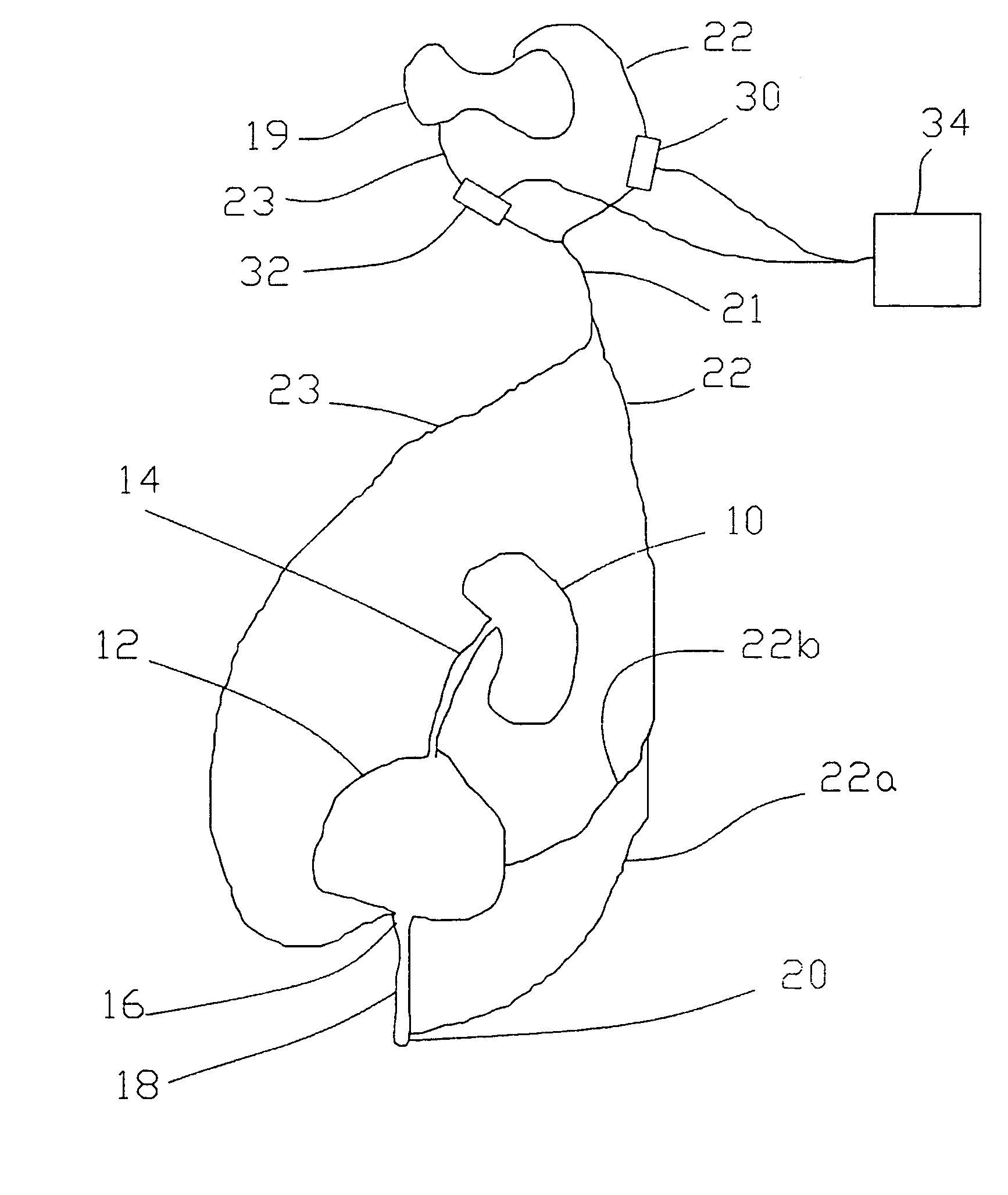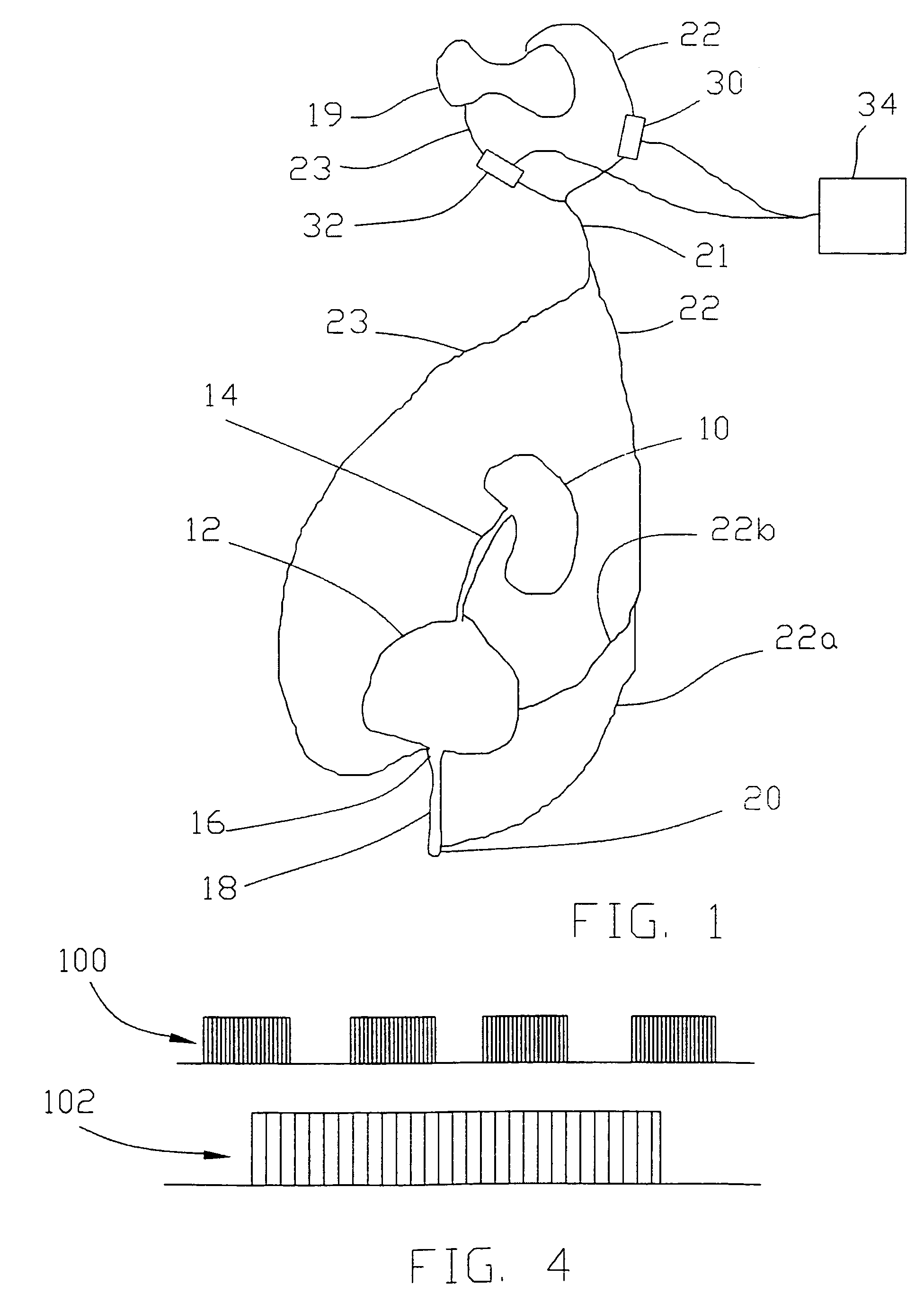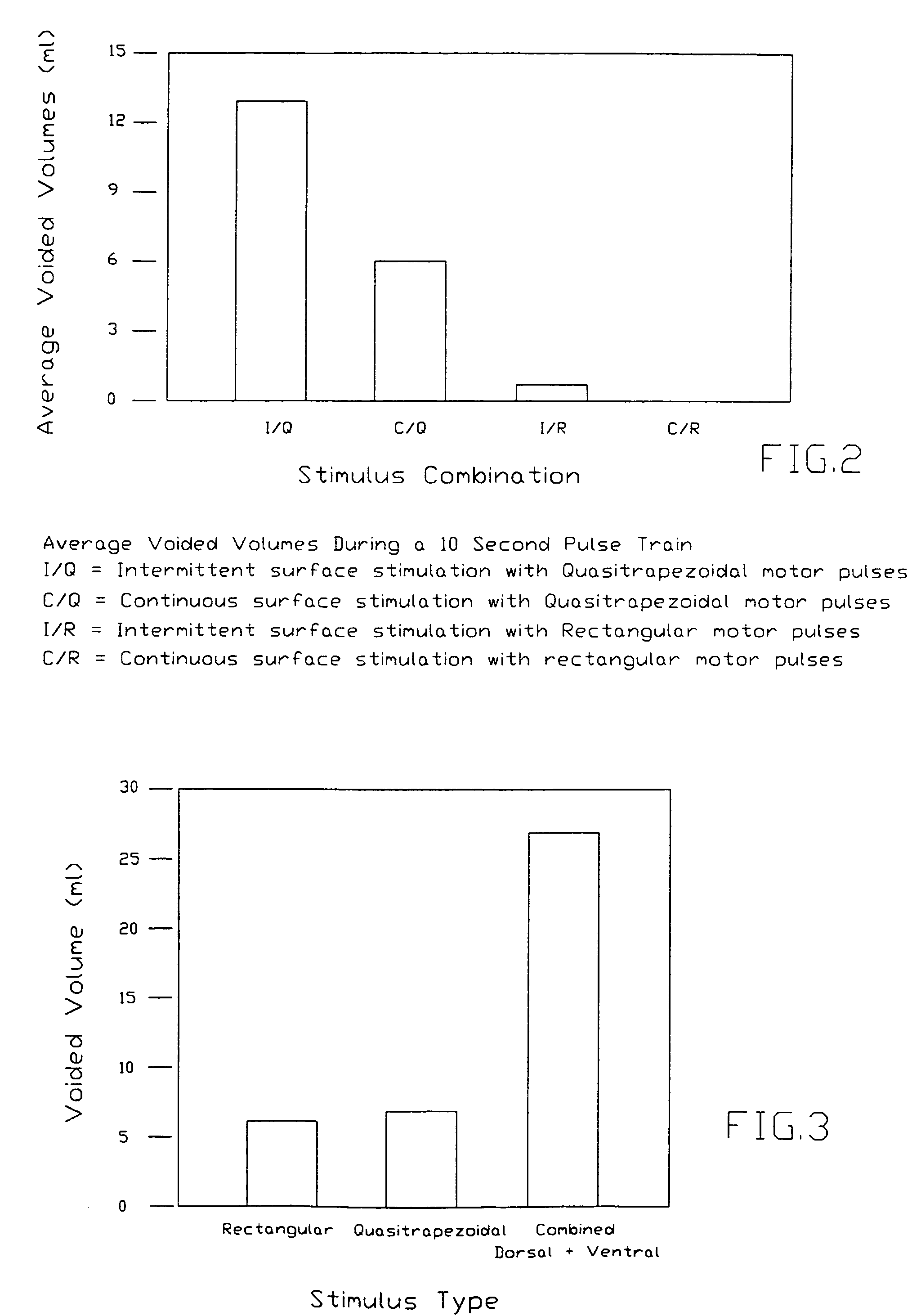Combined stimulation of ventral and dorsal sacral roots for control of bladder function
a technology of dorsal sacral roots and ventral nerves, which is applied in the field of selective nerve stimulation for bladder control, can solve the problems of loss of erection for the male, all three methods suffering from the same problem, and the morbidity of spinal cord injured patients, so as to improve erection, enhance voiding, and reduce the effect of urethral reflexes
- Summary
- Abstract
- Description
- Claims
- Application Information
AI Technical Summary
Benefits of technology
Problems solved by technology
Method used
Image
Examples
experiment 1
[0026]Combined sensory and motor stimulus was applied to an animal under 2.5% halothane inhalation anesthesia. An efferent motor stimulus was applied by a spiral nerve cuff electrode implanted on S2 motor roots. Either a quasitrapezoidal, balanced biphasic, 20 Hz pulse, with current amplitude set at a volume determined to selectively block sphincter activity, or a conventional rectangular supra-threshold stimulus was used. The efferent sensory stimulus was applied to the S2 dermatome with surface electrodes using a 20 Hz balanced biphasic rectangular pulse at 10 to 15 ma. The surface stimulus was varied to be continuous or intermittent (1 second on / 1 second off). The bladder was filled before each trial run with 60 ml of sterile saline.
[0027]FIG. 2 shows the average volume of fluid voided during a 10 second pulse train for each combination of stimulus trains. The results show that a combination of selective motor root activation by a quasitrapezoidal pulse train and intermittent sur...
experiment 2
[0028]Combined sensory and motor stimulus was applied to an animal under 2.5% halothane inhalation anesthesia. The motor stimulus was applied by a spiral nerve cuff electrode implanted on the S2 motor roots. A quasitrapezoidal, balanced biphasic, 20 Hz pulse, with current amplitude set at a value determined to selectively block sphincter activity, was used. The sensory stimulus was applied to S1, S2, or S3 dermatome with surface electrodes using a 20 Hz balanced biphasic rectangular pulse at 10 to 15 ma. The intermittent surface stimulation was varied to be either 1 second on / 1 second off or 0.5 seconds on / 0.5 seconds off. The tests were randomized for stimulus combinations. The test results show that bladder emptying was enhanced only when the combined sensory stimulus was applied to the S2 dermatome. The 1 second on / 1 second off intermittent pattern was more effective than the 0.5 seconds on / 0.5 seconds off pattern.
experiment 3
[0029]Combined stimulation of the dorsal and ventral sacral roots was applied to an animal by implanting spiral nerve cuff electrodes on the sacral ventral motor roots at S2 and S3, while leaving the dorsal roots intact and implanting a spiral nerve cuff electrode on one dorsal S2 root. The ventral sacral roots were stimulated with quasitrapezoidal pulse trains at 20 Hz with current amplitudes sufficient to selectively activate the bladder or with 20 Hz conventional rectangular pulses. At the same time, a 20 Hz intermittent stimulus, 1 second on / 1 second off was applied to the S2 dorsal root.
[0030]Table 1 shows the average results from three trials for each stimulus pattern. For 10 seconds of motor stimulation, an average increase of 66% in flow rate was observed during combined motor and sensory stimulation, while FIG. 3 shows the average volumes voided.
[0031]
TABLE 1VPvPuPulse TypeQmax(ml)(Qmax)(Qmax)Pv maxPu max20 Hz R2.36.050.040.0117.5160.020 Hz Q2.47.078.857.5111.399.4Aff + 20 ...
PUM
 Login to View More
Login to View More Abstract
Description
Claims
Application Information
 Login to View More
Login to View More - R&D
- Intellectual Property
- Life Sciences
- Materials
- Tech Scout
- Unparalleled Data Quality
- Higher Quality Content
- 60% Fewer Hallucinations
Browse by: Latest US Patents, China's latest patents, Technical Efficacy Thesaurus, Application Domain, Technology Topic, Popular Technical Reports.
© 2025 PatSnap. All rights reserved.Legal|Privacy policy|Modern Slavery Act Transparency Statement|Sitemap|About US| Contact US: help@patsnap.com



